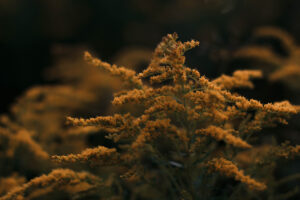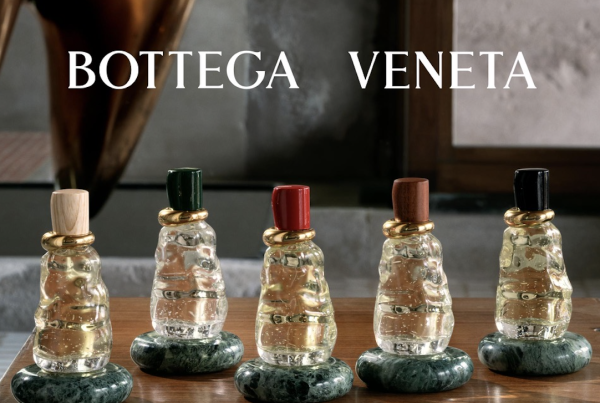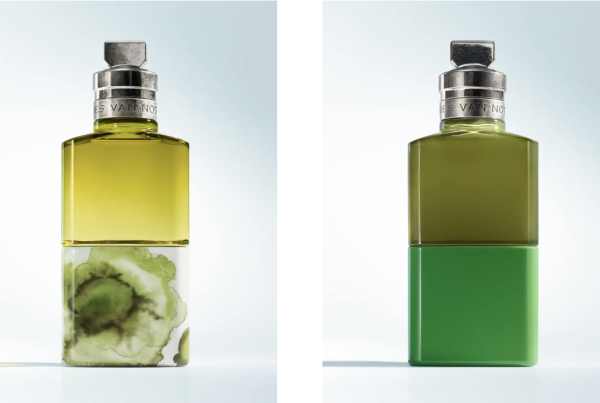
Mimosa trees (Acacia dealbata) are ideal for gardens. They are relatively compact, reaching a maximum height of 12m in the UK, and evergreen foliage creates year-round colour interest.
Blue-green fern-like leaves create the appearance of a tropical plant and let plenty of sunlight through to any plants underneath the canopy. In late winter to early spring, the tree blooms bright yellow fluffy ball-shaped flowers that are lightly scented and brighten up the garden during some of the bleakest months of the year. Gardeners Dream Acacia Trees will help bring colour to your garden with their range.
Is Mimosa the Same as the Silk Tree?
There are a few trees referred to as mimosas around the world. The most common in the UK is Acacia dealbata, also known as a wattle. Albizia julibrissin is the Latin name for silk trees, which are called mimosas in the US. The sensitive plant or touch me not plant has the botanical name Mimosa pudica, further adding to any confusion. Gardeners Dream Acacia Trees
Here, we focus on Acacia dealbata. This type of mimosa tree is native to Australia, and is popular in southern and coastal regions of the UK, where the temperature rarely reaches below -5°C. It belongs to the Fabaceae family of plants.
Where is the Best Place to Plant a Mimosa?
Native to warmer climates, mimosa trees aren’t fond of shade and thrive in a sunny location sheltered from strong, chilly winds. They prefer well-drained sand or loam soil with a neutral to acidic pH. Mimosa trees are fast growing, so ensure plenty of space for the plant to reach its full potential.
Mimosa is not fully winter hardy and even established trees need extra protection around the roots to survive the colder months. In areas prone to frost, grow Acacia dealbata in pots that can get moved inside over winter.
When to Plant a Mimosa Tree
The best time of year for planting Acacia dealbata in the ground is in the late spring. By now, the threat of frost should be over, and the ground soft enough to easily dig, with plenty of nutrients in the soil to help the plant flourish and grow.
Planting a Mimosa Tree
- Dig a hole slightly wider and at the same depth as the nursery pot.
- Loosen the soil around the hole to let the roots burrow through easily.
- Transplant the roots into the hole and ensure the plant is straight and in the correct position.
- Fill the hole back in, keeping the soil level no higher than it was in the pot.
- Press around the base of the trunk to firm the soil.
- Soak the soil around the tree with water.
- Water the mimosa regularly during its first few weeks in the new location.
Caring for a Mimosa Tree
Once established, mimosa is a relatively easy tree to look after.
Watering
Mimosa is drought-tolerant and doesn’t need to be watered very frequently. It prefers soil that is quite moist but drains well and doesn’t get waterlogged. Usually, natural rainfall will be enough to keep a mimosa tree happy and healthy. But it will appreciate a soak if the ground dries out during a dry spell.
Bear in mind that pot-grown trees need watering more often, particularly during the growing season, as the soil in the container dries out faster.
Feeding
Acacia doesn’t generally need feeding. However, young trees can benefit from a monthly application of orchid fertiliser. As the tree matures, you may wish to use an all-purpose feed once a year to promote new growth, but this isn’t essential.
Pruning
Mimosas don’t need much pruning unless you wish to maintain the tree at a particular size and shape. The removal of dead or damaged branches is all that is usually required.
You may wish to prune or trim spent flowering sprouts to keep the tree neat. The following year’s flowers are produced in autumn, so ensure any pruning is completed by late summer.
Growing Mimosa in Pots
Mimosas grow well in pots and containers, although they won’t reach the same height and spread as those planted in the ground. Choose a light potting mix and ensure there are plenty of drainage holes in the bottom of the pot to help prevent root rot.
Place the pot in full sun and out of winds. Mimosa is a tropical plant that doesn’t enjoy even partial shade, especially not when planted in containers, so ensure it can soak up plenty of sunlight. In front of a south-facing wall is the ideal spot to plant mimosas.
As the temperatures fall during winter, move the pot into a greenhouse or conservatory to protect the mimosa plant from frost damage.
Propagation
If one mimosa isn’t enough, the good news is they aren’t too tricky to propagate.
Cuttings
Mimosas can be reproduced by taking semi-ripe cuttings and rooting them. The best time of year for taking mimosa cuttings is the summer when the blooms have faded, but the new flowers aren’t yet being produced.
Use a pair of sharp secateurs to take a plant cutting around 8-15cm long. Snip just below a leaf node and remove any foliage growing beneath the node. At this point, you may wish to dip the cut end in a rooting hormone to speed up new growth, but this isn’t essential.
Place the cutting in a small pot filled with a light potting mix and put it in a greenhouse or under a clear plastic sheet. As the new plant shows signs of growth, move it to a position where it can enjoy bright indirect light without the hot sun scorching the leaves. Young plants need moist soil, so water the cuttings regularly. The new mimosa plant should be strong enough to be moved outside the following spring once the threat of frost has passed.
Seed
Like other trees that share the mimosa name, the easiest way to propagate acacia dealbata is by seed. Collect seeds from spent blooms or buy them from a reputable garden centre. Mimosa seeds can be sown at any time of year. Scarify the mimosa seeds using sandpaper or nail clippers to nick a small piece. To promote successful germination, soak the seeds in a cup of boiling water overnight or until the seeds start to swell. Remove any seeds that float, as these won’t sprout.
Sow the mimosa seeds in pots or trays of moist soil and cover them with a clear plastic bag. Keep the seeds in a bright spot indoors, where the temperature is consistently between 20-25°C.
Germination takes 2-3 weeks. As you gradually increase ventilation by cutting the bag, you should notice the seed start to sprout.
Once the seedlings have grown strong enough, transplant them into a larger pot to accommodate growth and place them in a bright spot away from hot sun rays.
Common Problems
Acacia dealbata is a vigorous tree that isn’t susceptible to common pests and diseases.
Frost Damage
Frost damage is the biggest threat to mimosa trees planted in the UK. The best way to prevent the tree from being hurt by harsh temperatures is to use mulch to insulate the roots as much as possible. If frost does damage the tree, some pruning may be required to remove dead or damaged branches.
Leaking Sap
Sometimes after spells of particularly hot or wet weather, the bark can start to leak sticky sap. This is due to the root systems being too engorged. To prevent the roots from tearing, the trunk creates openings to ease the pressure and let excess sap drain away. If this happens now and again then it’s a sign that the tree is healthy and doing as it should. However, if a mimosa often leaks sap, it’s a sign that the growing conditions aren’t quite right. For example, the soil may be getting waterlogged.
It’s worth noting that acacia sap can stain paths, brickwork and even your car if it’s parked underneath the tree. Be sure to wash away any sap as soon as you notice it to prevent this from happening.
Brown Leaves
The occasional brown leaf is to be expected on an evergreen plant as old leaves wither and die to be replaced by new ones. This is perfectly normal and is nothing at all to worry about. However, if you notice several brown leaves appearing at once or all the leaves on the lower branches turning brown, it could be a sign that the mimosa is suffering from drought. On the other hand, blacking leaves are usually a sign of waterlogged soil.
Wildlife
Growing mimosa is a great way to attract bees into the garden. Few trees flower as early in the year as the mimosa, hence why it is sometimes called the winter mimosa. Blooms appear from as early as January, lasting through to April. These provide a valuable nectar source for early pollinators.
Mimosa trees make a great addition to the garden. Not only do their evergreen leaves fill the space with greenery throughout the year, but the flowers bloom in January and February, producing a burst of cheerful colour when much of the garden is dull and grey.
When kept in a sunny spot out of the shade, mimosa trees are easy to plant and low maintenance to look after – even if they are native to more tropical climates.


























































